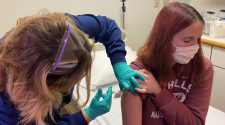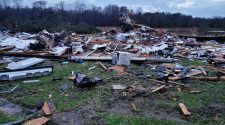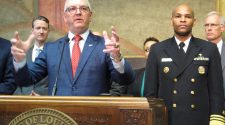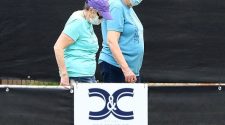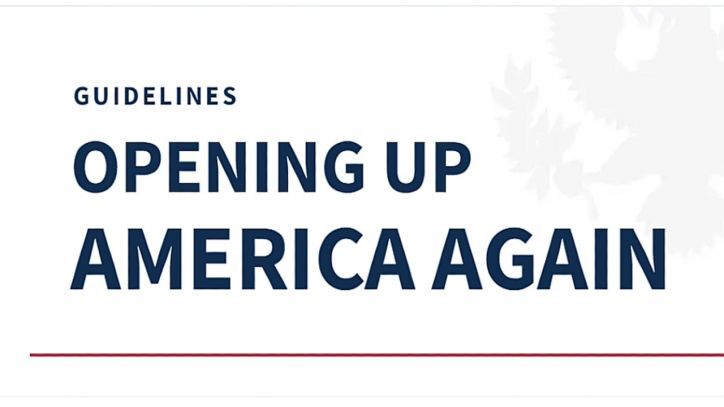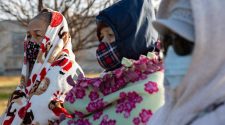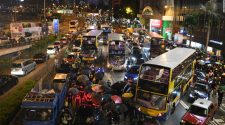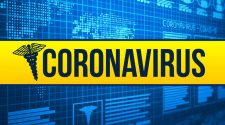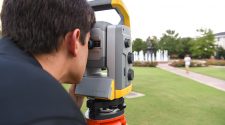President Donald Trump gave governors a road map Thursday for recovering from the economic pain of the coronavirus pandemic, laying out “a phased and deliberate approach” to restoring normal activity in places that have strong testing and are seeing a decrease in COVID-19 cases.
Places with declining infections and strong testing would begin a three-phase gradual reopening of businesses and schools.
In all phases, inviduals and businesses will be required to follow guidelines outlined by the Centers for Disease Control. The guidelines also include general recommendations to businesses as they plan for potential reopenings, suggesting temperature-taking, rapid COVID-19 testing and widespread disinfection efforts in workplaces.
GUIDELINES FOR ALL PHASES: INDIVIDUALS
CONTINUE TO PRACTICE GOOD HYGIENE
- Wash your hands with soap and water or use hand sanitizer, especially after touching frequently used items or surfaces.
- Avoid touching your face.
- Sneeze or cough into a tissue, or the inside of your elbow.
- Disinfect frequently used items and surfaces as much as possible.
- Strongly consider using face coverings while in public, and particularly when using mass transit.
PEOPLE WHO FEEL SICK SHOULD STAY HOME
- Do not go to work or school.
- Contact and follow the advice of your medical provider.

GUIDELINES FOR ALL PHASES: EMPLOYERS
Develop and implement appropriate policies, in accordance with Federal, State, and local regulations and guidance, and informed by industry best practices, regarding:
- Social distancing and protective equipment
- Temperature checks
- Testing, isolating, and contact tracing
- Sanitation
- Use and disinfection of common and high-traffic areas
- Business travel
Monitor workforce for indicative symptoms. Do not allow symptomatic people to physically return to work until cleared by a medical provider.
Develop and implement policies and procedures for workforce contact tracing following employee COVID+ test.

In phase one, for instance, the plan recommends strict social distancing for all people in public. Gatherings larger than 10 people are to be avoided and nonessential travel is discouraged.
PHASE ONE: INDIVIDUALS
ALL VULNERABLE INDIVIDUALS should continue to shelter in place. Members of households with vulnerable residents should be aware that by returning to work or other environments where distancing is not practical, they could carry the virus back home. Precautions should be taken to isolate from vulnerable residents.
All individuals, WHEN IN PUBLIC (e.g., parks, outdoor recreation areas, shopping areas), should maximize physical distance from others. Social settings of more than 10 people, where appropriate distancing may not be practical, should be avoided unless precautionary measures are observed.
Avoid SOCIALIZING in groups of more than 10 people in circumstances that do not readily allow for appropriate physical distancing (e.g., receptions, trade shows)
MINIMIZE NON-ESSENTIAL TRAVEL and adhere to CDC guidelines regarding isolation following travel.

PHASE ONE: EMPLOYERS
Continue to ENCOURAGE TELEWORK, whenever possible and feasible with business operations.
If possible, RETURN TO WORK IN PHASES.
Close COMMON AREAS where personnel are likely to congregate and interact, or enforce strict social distancing protocols.
Minimize NON-ESSENTIAL TRAVEL and adhere to CDC guidelines regarding isolation following travel.
Strongly consider SPECIAL ACCOMMODATIONS for personnel who are members of a VULNERABLE POPULATION.

PHASE ONE: SPECIFIC TYPES OF EMPLOYERS
SCHOOLS AND ORGANIZED YOUTH ACTIVITIES (e.g., daycare, camp) that are currently closed should remain closed.
VISITS TO SENIOR LIVING FACILITIES AND HOSPITALS should be prohibited. Those who do interact with residents and patients must adhere to strict protocols regarding hygiene.
LARGE VENUES (e.g., sit-down dining, movie theaters, sporting venues, places of worship) can operate under strict physical distancing protocols.
ELECTIVE SURGERIES can resume, as clinically appropriate, on an outpatient basis at facilities that adhere to CMS guidelines.
GYMS can open if they adhere to strict physical distancing and sanitation protocols.
BARS should remain closed.
In phase two, people are encouraged to maximize social distancing and limit gatherings to no more than 50 people unless precautionary measures are taken. Travel could resume.
PHASE TWO: INDIVIDUALS
ALL VULNERABLE INDIVIDUALS should continue to shelter in place. Members of households with vulnerable residents should be aware that by returning to work or other environments where distancing is not practical, they could carry the virus back home. Precautions should be taken to isolate from vulnerable residents.
All individuals, WHEN IN PUBLIC (e.g., parks, outdoor recreation areas, shopping areas), should maximize physical distance from others. Social settings of more than 50 people, where appropriate distancing may not be practical, should be avoided unless precautionary measures are observed.
NON-ESSENTIAL TRAVEL can resume

PHASE TWO: EMPLOYERS
Continue to ENCOURAGE TELEWORK, whenever possible and feasible with business operations.
Close COMMON AREAS where personnel are likely to congregate and interact, or enforce moderate social distancing protocols.
NON-ESSENTIAL TRAVEL can resume.
Strongly consider SPECIAL ACCOMMODATIONS for personnel who are members of a VULNERABLE POPULATION.

PHASE TWO: SPECIFIC TYPES OF EMPLOYERS
SCHOOLS AND ORGANIZED YOUTH ACTIVITIES (e.g., daycare, camp) can reopen.
VISITS TO SENIOR CARE FACILITIES AND HOSPITALS should be prohibited. Those who do interact with residents and patients must adhere to strict protocols regarding hygiene.
LARGE VENUES (e.g., sit-down dining, movie theaters, sporting venues, places of worship) can operate under moderate physical distancing protocols.
ELECTIVE SURGERIES can resume, as clinically appropriate, on an outpatient and in-patient basis at facilities that adhere to CMS guidelines.
GYMS can remain open if they adhere to strict physical distancing and sanitation protocols.
BARS may operate with diminished standing-room occupancy, where applicable and appropriate.
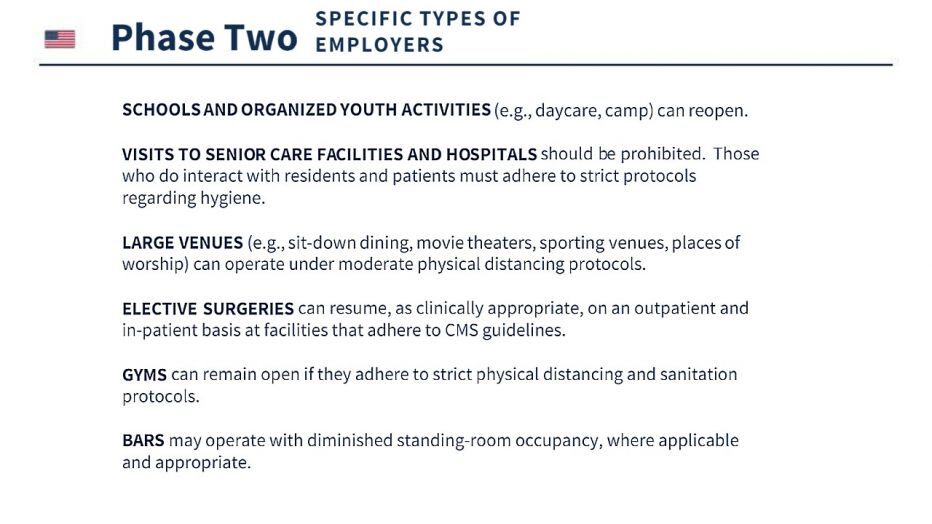
Phase three envisions a return to normalcy for most Americans, with a focus on identification and isolation of any new infections.
PHASE THREE
VULNERABLE INDIVIDUALS can resume public interactions, but should practice physical distancing, minimizing exposure to social settings where distancing may not be practical, unless precautionary measures are observed.
LOW-RISK POPULATIONS should consider minimizing time spent in crowded environments.
Resume UNRESTRICTED STAFFING of worksites.
VISITS TO SENIOR CARE FACILITIES AND HOSPITALS can resume. Those who interact with residents and patients must be diligent regarding hygiene.
LARGE VENUES (e.g., sit-down dining, movie theaters, sporting venues, places of worship) can operate under limited physical distancing protocols.
GYMS can remain open if they adhere to standard sanitation protocols.
BARS may operate with increased standing room occupancy, where applicable.

The new guidelines are aimed at easing restrictions in areas with low transmission of the coronavirus, while holding the line in harder-hit locations. They make clear that the return to normalcy will be a far longer process than Trump initially envisioned, with federal officials warning that some social distancing measures may need to remain in place through the end of the year to prevent a new outbreak. And they largely reinforce plans already in the works by governors, who have primary responsibility for public health in their states.


